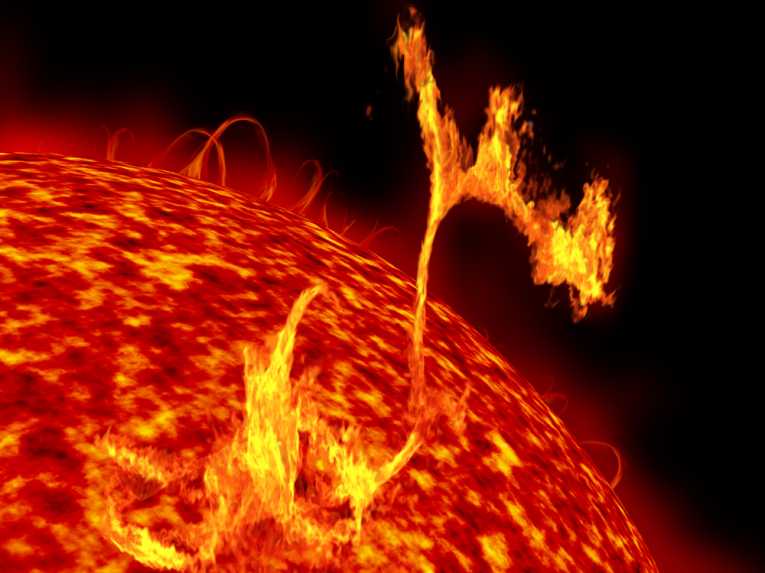You don't have to be Alaskan or an Icelander but it helps. The aurora (goddess of the dawn) borealis (*you should know who he is?*) is the phenomenon on the tip of everyone's tongue, but in September, 1859, London was lit up at one o'clock in the morning, along with Sydney, Tokyo and Boston, by one of the most aggressive spurts of solar energy ever heard of. The link with the Sun is the IMF. Not the money one. This is the Interplanetary Magnetic Force or solar wind. No, not in Star Wars. It is formed by solar flares of ions from the Sun, which by virtue of their own magnetic field, interfere with every planets own field by causing geomagnetic storms, or at least a disturbance, creating coloured light effects around the planets' poles.
In the case of the earth, oxygen and nitrogen at varying distances from the surface cause the light to be blue, violet, green or red. Their ions light up as electrons bombard them in the same way as in a cathode ray tube (TV to you.)

Here the green aurora borealis seen at Holy Island Causeway Northumberland, UK (23/1/2012). Caused by oxygen ions low in the atmosphere. If they were colliding with the solar wind higher, red colours would be created; Credit: Reed Ingram Weir
The sunspot cycle is a rough guide to solar energy output. Every eleven years, the auroras become more prevalent, but the three years following sunspot peaks also seem to have peaks of auroral activity. Our present cycle should peak next year, but following major solar explosions the aurora has recently been giving us low latitude displays in anticipation of more to come. Digital cameras tend to distort the colours, but this often exaggerates the colours, rather than repressing the effect.
In Scotland, Norway, Alaska and around Lake Superior, photographs last week showed us how to enjoy the sky as they did in Victorian times. Yorkshire (UK) was the furthest south that this particular phenomenon reached, but New York( NY) can still hope that maybe next year the magnetosphere will respond for them.

Aurora Borealis (or Northern Lights) on Kvaloya, NO (23/1/2012); Credit: Lars Tiede
The Earth Times will inform you of any new solar flare activity. At up to two million miles per hour, it takes a couple of days to cross the solar system and cause an aurora here, so watch out for this space, this spring. (your own pics are also welcome - please send us an email.)
[*Borealis, by the way, refers to the god of the cold north wind in Greek mythology (Boreas)*]










